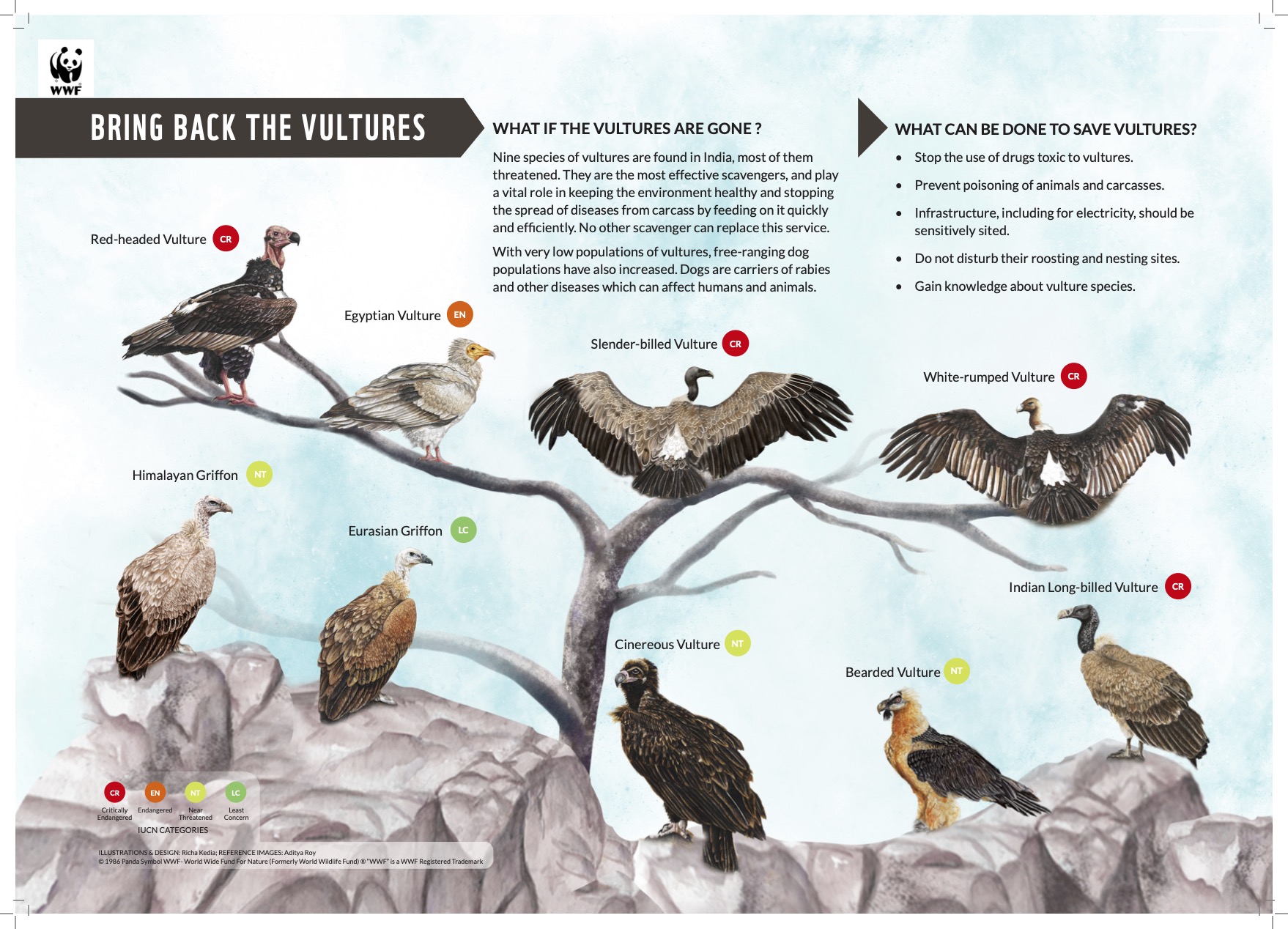Why in the News?
Vultures, vital for carcass disposal and disease control, are key to pandemic preparedness.
About Vulture Species in India:
- Overview: Vultures are among 22 global species of large scavenger birds, found mostly in tropics and subtropics.
- Ecological Role: Serve as nature’s garbage collectors, preventing disease spread and maintaining balance in ecosystems.
- Indian Diversity: India hosts 9 species — Oriental white-backed, Long-billed, Slender-billed, Himalayan, Red-headed, Egyptian, Bearded, Cinereous, and Eurasian Griffon.

Distribution and Population Trends:
- Historic Abundance: In the 1980s, India had over 40 million vultures, often in large groups near carcass dumps.
- Population Crash: Since the 1990s, numbers have declined by over 95%, mainly due to diclofenac poisoning from veterinary use.
- Flyway Connection: Vultures are part of the Central Asian Flyway (CAF), linking breeding sites in Central Asia with South Asia’s wintering zones.
- Global Relevance: The CAF spans 30+ countries, making vulture conservation a regional and international public health concern.
Vultures and Pandemic Preparedness:
- Carcass Disposal: By consuming dead animals, vultures stop spread of pathogens such as anthrax, Clostridium botulinum, rabies.
- Bio-Monitor Role: As first responders at carcasses, they act as natural surveillance systems, reducing risks of zoonotic spillover.
- Conservation Gap: Protection of vultures is rarely included in One Health strategies, despite being low-cost compared to pandemic response.
- Community Involvement: Local communities coexisting with vultures can aid in awareness, conservation, and disease monitoring, but remain underutilised.
| [UPSC 2012] Vultures which used to be very common in Indian countryside some years ago are rarely seen nowadays. This is attributed to:
(a) the destruction of their nesting sites by new invasive species disease among them (b) a drug used by cattle owners for treating their diseased cattle persistent and fatal* (c) scarcity of food available to them (d) a widespread, persistent and fatal disease among them |
Get an IAS/IPS ranker as your 1: 1 personal mentor for UPSC 2024

